By Wanda Oliver
We are sharing a few images and findings from Wanda Oliver's recent 2020 project that not only marked her 67th birthday, but also served as a voyage of discovery.
In the spring of 2020, I will celebrate my 67th birthday. As I sit here on the eve of that new year and upcoming milestone, I find myself thinking about the slings and arrows of my life - the ups and downs, the experiences had, the experiences not had, the influences felt, the influences not felt, the things learned, the things unlearned, the things not learned at all - and how they have led to me being just who I am at this time and place.
I am also thinking of a goal, or perhaps more of a challenge, that intrigues me. Can analog and digital photographic processes be combined in some innovative way that leads to compelling images that could not have been created by either approach alone? Is there some hybridized frontier waiting to be explored?
Out of these thoughts, a project has emerged. Over the course of the weeks leading up to my birthday, I will reinterpret a single image 67 times. I embark with the hope that through forced repetition within a compressed time frame, some creative breakthrough will be coaxed into being. If successful, I will stand fully in my present moment in time, pay homage to how I got here and offer some innovative and creative results.
The image I’ve chosen for the project is a unique artifact - an image on paper created by an unrepeatable analog process involving a snippet from my neighbor’s trumpet vine, sunlight, and chemistry. The roughly 4x5 inch original has been scanned in high resolution by a high end flat bed scanner to create a digital file.
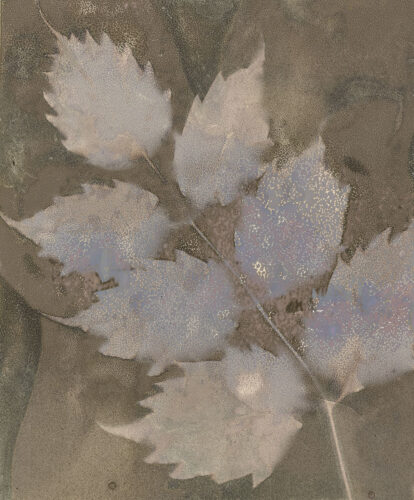
1. The original image, created via a combination of lumen printing and chemigram processing.
Whether this scanned file is manipulated in software or printed for use in further analog processes, the hybridization of approaches was a given from the start. In addition, this sort of combination workflow is common place. So then, what am I seeking to explore? I believe that we are in the infancy of what might be accomplished by fully embracing the best of both analog and digital approaches.
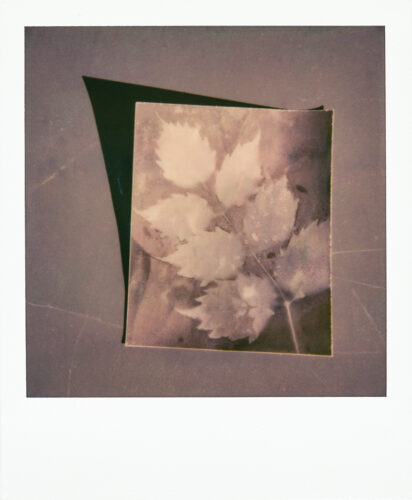
16. I woke up this morning with the first truly creative idea in my mind. Time will tell if it succeeds in the execution. Apparently fifteen iterations are enough for me to become restless with digital filters and manipulations, and for the unconscious mind to decide to intervene. In the meantime, Polaroids. Above is a simple Polaroid photograph of the original.
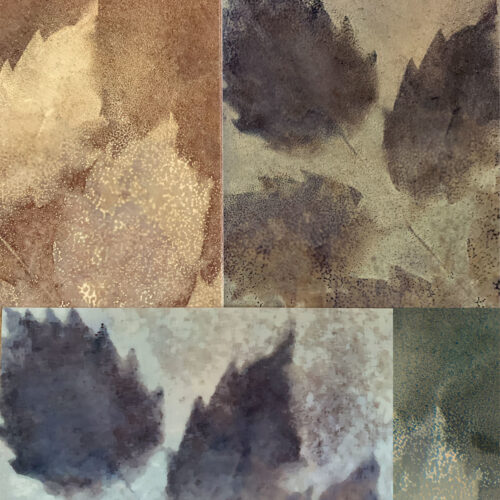
22. Digital and physical collage using a variety of source material, including photographic prints and Hipstamatic digital images generated by rephotographing the original artifact.
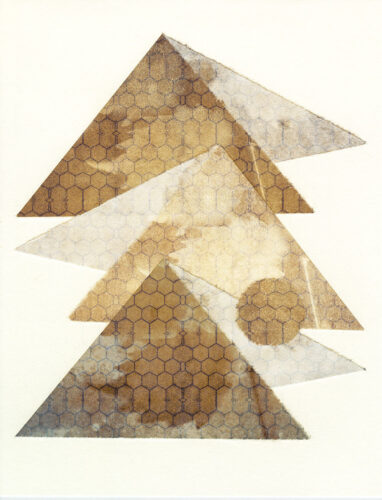
30. In these images the application of the texture is ordinary Adobe Photoshop, but artificial intelligence is being used in the extension, Infinite Texture Panel, to assist the artist in navigating, previewing and selecting from among an almost infinite number of options. The tool is organizing and presenting options in an extremely useful way, but not making any decisions - the outcome remains in the hands of the artist.
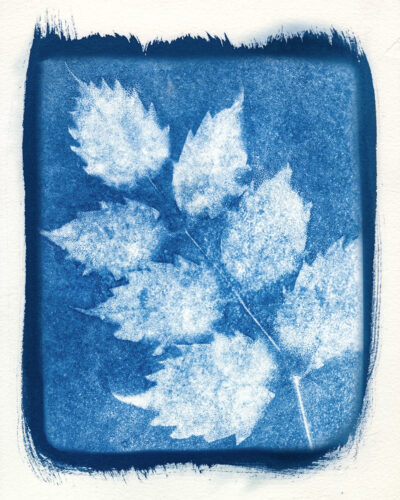
37. From 21st century artificial intelligence back to 1842 and the invention of the cyanotype. But even the light and chemistry-based image is digitally dependent. The negative used to produce it was created in Adobe Photoshop and printed on an ink jet printer. And while my approach to producing negatives for alternative photographic processes is fairly straight forward, whole books are written on the subject and entire software and printing systems are dedicated to it.
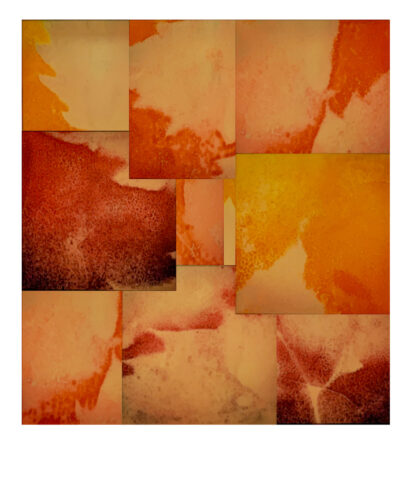
55. This image above is based on a group of Polaroid images made using the Polaroid Lab mosaic capabilities. The mosaic images were created on Polaroid film, then rephotographed and used as elements in a digital collage, rendered in a Polaroid style.
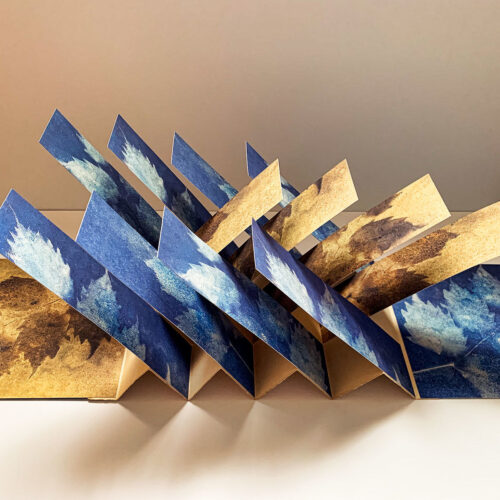
58. Using versions of the image to create a flag book - a physical object in real space.
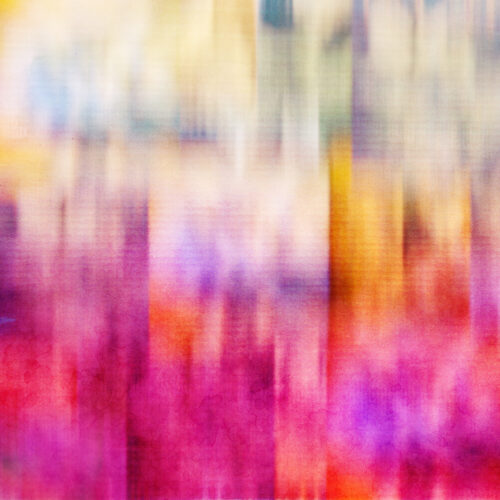
63. Distorting the image with DxO's Nik Collection and letting my love of color go a bit wild.
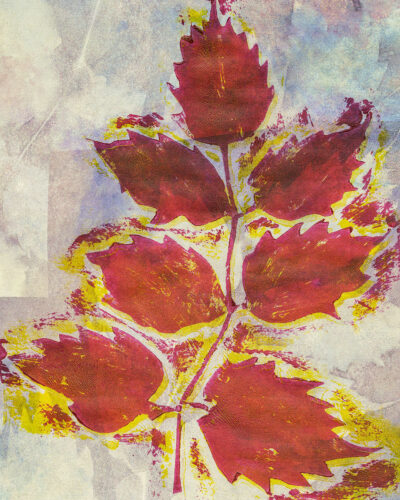
66. I started with a unique handmade artifact and I want to end that way, so why not make a real hand print? The plate was constructed by printing the original image onto heavy water color paper, cutting out the leaf shape and gluing it onto another sheet of heavy water color paper. The substrate is an ink jet print of a digital collage of some of the images developed along the way. I am a neophyte at print making, but it is a skill I intend to pursue in the coming months. This image, then, serves not only to close the loop on the project, but it also defines a framework for what I want to accomplish in my 68th year.
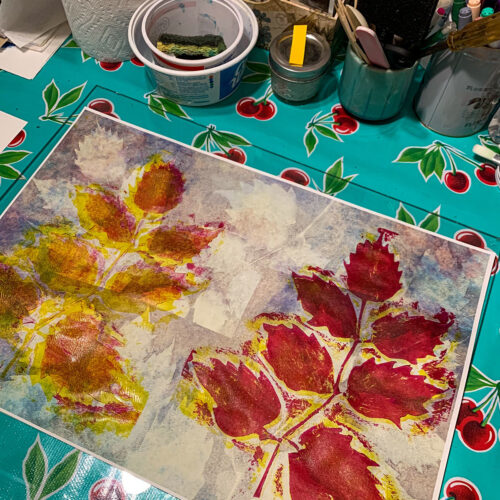
67. The 68th year awaits.
I think it is safe to say that most advanced uses of digital technology in photography today are focused on perfecting images - at the time of capture or after the fact. The emphasis seems to be on an automatic mode that corrects for all things in the blink of an eye. I don't find any of that personally objectionable, but it isn't what I find exciting. The frontier that interests me is where technology empowers me by aiding and abetting my creativity.
As I look at these 67 images, I see waves of more creative output arising at intervals. I also notice a reinforcement of two of my core beliefs. The first is, if I work, the inspiration will come. The second is that everything is synergistic. This project has been a great way to start the year in 2020. To paraphrase photographer Minor White, what shall I be given next?
Wanda Holmes Oliver is a photographer, writer and educator based in Northeast Texas. She also claims to be a bit of a mad scientist, experimenting in analog imagery, digital photography and alternative processes. She believes that art is a fundamental right and an essential element in human life, and that artists will always have a place in human society. To read more about Wanda's project, The 67th Year, and to view all of her images in progression, go to www.wandaholmesoliver.com/the-67th-year.